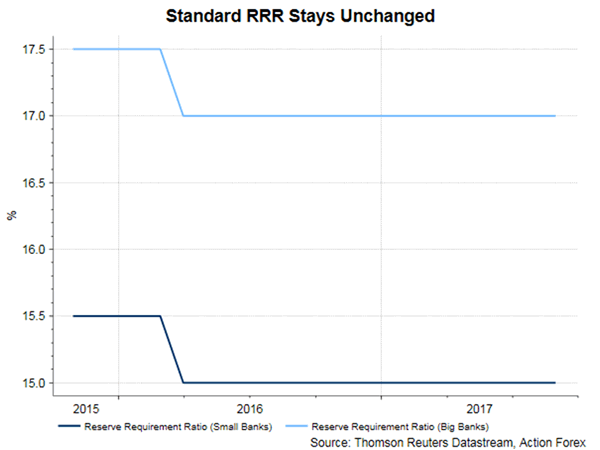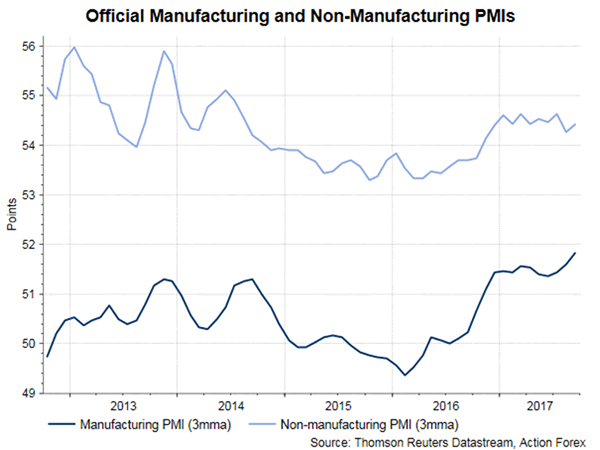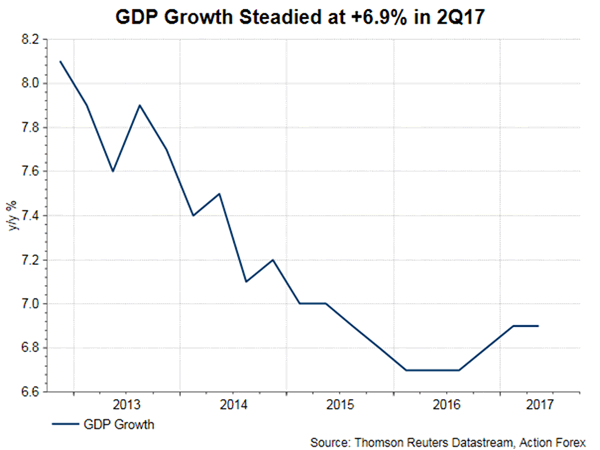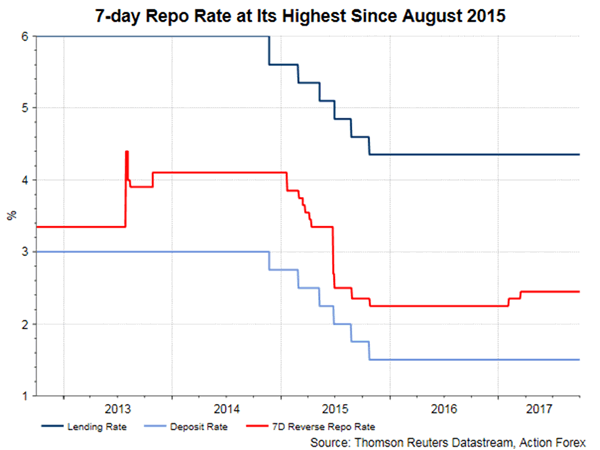PBOC announced to adopt targeted RRR cut in 2018 in some banks to ‘encourage inclusive financing, such as credit support for small and micro-sized enterprises (SMEs), startups and agricultural production, as well as small business owners, impoverished groups and students. All of the large and medium sized commercial banks, 90% of municipal commercial banks, and 95% of agriculture commercial banks are eligible for this measure. Banks with inclusive financing exposure higher than 1.5% of loans would be eligible for 50 bps RRR cut from benchmark ratios. Banks with exposure higher than 10% would qualify for additional 100 bps RRR cut. We believe the move is a fine-tuning of PBOC’s other tightening measures, rather than a shift towards a loosening monetary stance. Indeed, by choosing a targeted RRR cut, instead of a broad-based cut or a rate reduction, the central bank is sending a signal that it has not changed the monetary policy stance which remains ‘prudent and neutral”.

Taking Effect in 2018
The plan to implement the RRR cut in 2018, rather than immediately, justifies our view that this move is a fine-tuning of other tightening measures. We believe PBOC would like the targeted RRR cut to offset part of the impact of the inclusion of negotiable certificate of deposits (NCDs) in the quarterly macro-prudential Assessments (MPA) from 1Q18. The measure, announced on August 11, aims at controlling the excessive use of interbank CDs in interbank financing. (More on NCDs: https://www.actionforex.com/action-insight/china-watch/38422-china-s-monetary-conditions-remain-tight-as-deleveraging-in-progress). This measure would tighten liquidity in many banks.
On Track to Achieve Growth Target
The central bank has no urgency to loosen its monetary policy in the current macroeconomic environment. Although the growth of economic activities has shown signs of moderation in third quarter, the strength in the first half of the year suggests that the government is still on track to achieve it full year growth target of around +6.5%. Recent data have shown that the economic activities remained robust. The official manufacturing PMI data added +0.7 points to 52.4 in September, highest since April 2012. Looking into the details, the new orders index gained +1.7 points to 54.8 while the new export orders index added +0.9 point to 51.3. The input prices index jumped +3.1 points to 68.4, highest since December 2016. The Caixin manufacturing PMI, however, slipped -0.6 points to 51 for the month. This is because the official survey targets large firms while Caixin’s survey targets SMEs. On the non-manufacturing sector, official PMI added +2 points to 55.4, highest since May 2014


Global Environment Does Not Warrant Loosening
A number of major central banks have ended their ultra-accommodative monetary policy: The Fed has begun rate hike in December 2015 and would start balance sheet reduction this month. ECB signaled in June that interest rates would not go lower and has recently signaled to discuss QE tapering in autumn. BOE has warned that the market has underestimated the chance of a rate hike and indicated that one would come soon. BOC has begun its tightening cycle in July. The global environment has made it more difficult for PBOC to formally adopt monetary easing or it would risk capital outflow and massive selloff of the renminbi. A GDP growth rate below +6.5% might trigger PBOC to adopt a broad-based monetary loosening. A shift in the monetary policy stance should be first visible in the 7-day repo, which has stayed at high level.















